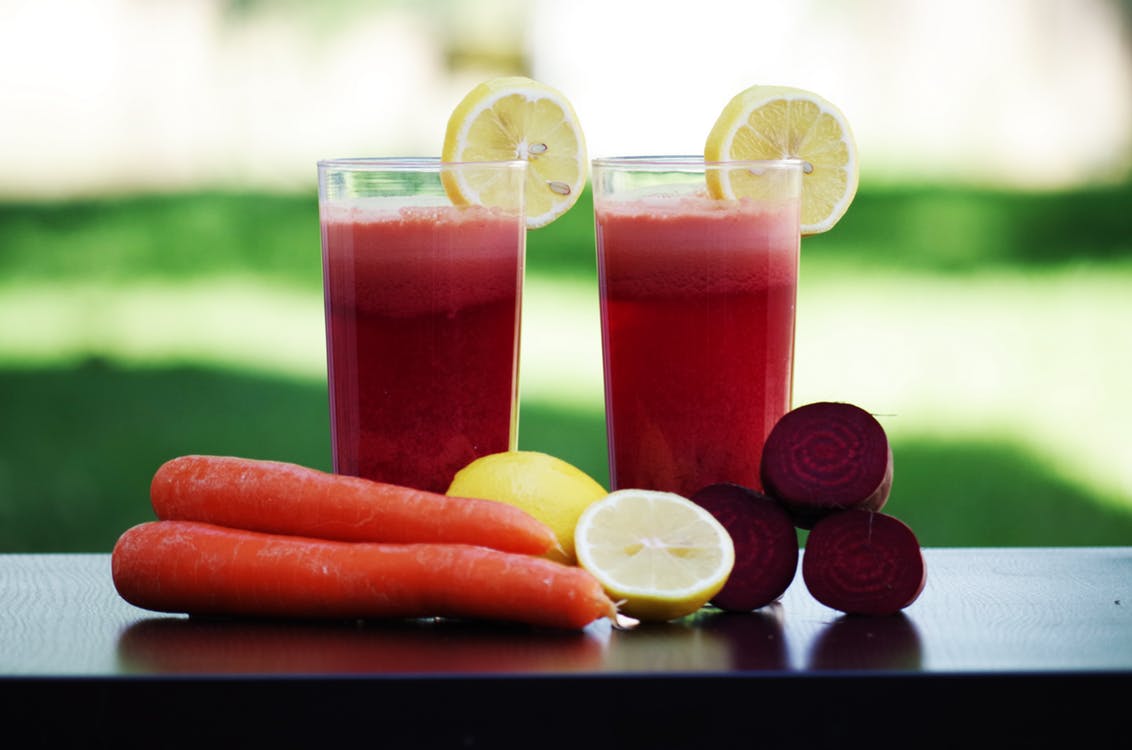| Disclosure: The links on this page are "Affiliate Links" and while these are shown at no costs to our viewers, they generate commissions for our website(s) |
The Health Benefits of Juicing

Jack LaLane lived well into his 90s, as well as Paul Bragg, two notoriously healthy nutritionists, and one of their secrets, something they did well into old age, was juicing. Jack LaLane even came out with his own juicer. You, however, can buy a Vitamix or K-Tec, or even a cheap Walmart blender if it will get the job done. What are the health benefits of juicing?
The resulting liquid from juicing whole fruits and vegetables has a lot more of the vitamins, minerals, and phytochemicals than you get from eating the whole versions that they come from. However, one of the things you’re missing when you juice is fiber. You can remedy this by supplementing with whole food fiber, like applesauce or ground flaxseed if you have trouble with eating a whole lot of whole fiber.
Juicing is better because your body can absorb the nutrients better, and it gives your digestive system a little bit of rest from working on that fiber all the time. There are some people that even think that juicing can reduce your risk of cancer, boost your immune system, and help get the toxins out of your body, help with your digestion too, and even help you lose weight.
When you juice, you are not cooking or baking your greens, vegetables, and fruits, so you are not destroying the micronutrients by altering their chemical composition and shape. Almost all health authorities recommend at least six to eight servings of fruits and vegetables each day, and juicing is one of the easiest ways to get those servings.

Even though you can juice fruits, if you have a weight problem, high blood pressure, high cholesterol, or if you have diabetes, you should probably stay away from fruits for the time being. Just stick to dark green leafy vegetables and vegetables. Add berries to taste.
You can integrate a wider variety of vegetables into your diet with juicing. A lot of people eat the same bad salad vegetables each day, and a lot of these salads aren’t even full of the dark leafy greens that you get with juicing. You don’t get kale, arugula, watercress, collard greens, or even spinach in most salads. You might get a lot of iceberg lettuce and bacon, cheese, and croutons. That’s certainly not healthy though.
How do You Start Juicing?
Begin by juicing vegetables that you enjoy. Add fruits and berries to taste. Slowly but surely, increase the amount of dark leafy greens in your juice. After some time, you will start to get used to the taste, and you can always add a lot more berries and fruits if you just can’t stand the taste. If you’re a little worried about how to do it, don’t be. Most of the commercial, heavy-duty juicers that are on the market come with little instruction manuals that tell you how to do everything from putting the vegetables in to cleaning the machine. It’s that simple, and a lot of machines are dishwasher-safe, at least the main components that get messy anyway.
Should You Start Juicing?
You should absolutely start juicing. Since most health authorities recommend six to eight servings of fruits and vegetables each day, you need to get those into your body somehow. You’re probably not doing a very good job of it right now. You might only be eating one or two servings of fruits and vegetables each day. Juicing is a sure way to get at least six to eight servings of fruits and vegetables each day without any work, hassle, or cooking.









